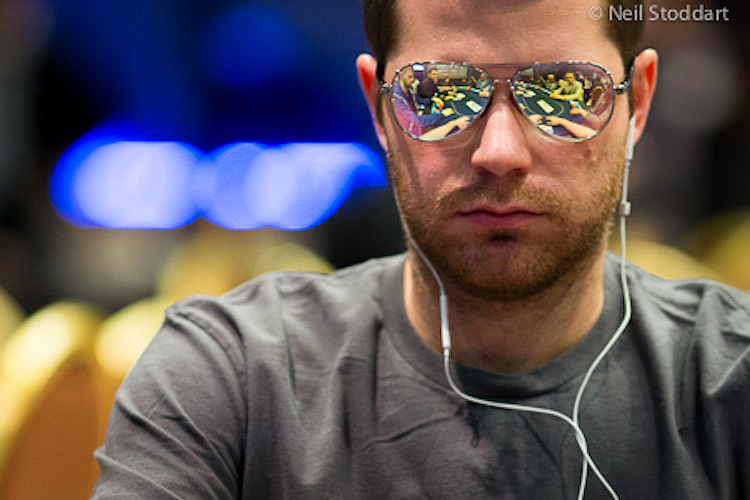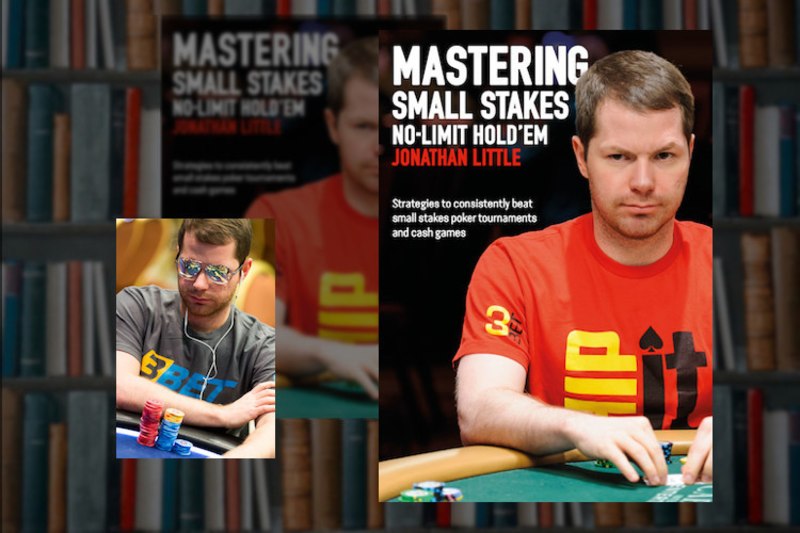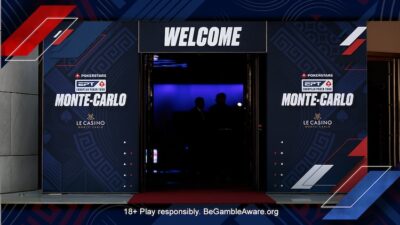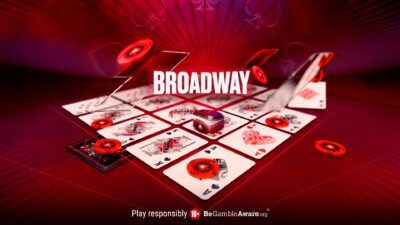Of poker pro and coach Jonathan Little’s several strategy books, Mastering Small Stakes No-Limit Hold’em has been especially cited for praise by those who play lower stakes NLHE — a group that comprises the majority of poker players.
In the book Little shows readers how to play a solid, competent, decently aggressive style that will be profitable in these games. He provides both a basic strategy to crush small stakes games and identifies adjustments needed when facing more challenging competition.
Mastering Small Stakes No-Limit Hold’em begins with several chapters devoted to preflop strategy, including how to play when you are first in as the open-raiser, when facing limpers, when facing a raise, and other situations. Then come chapters focused on postflop strategy, including how to proceed after being the preflop aggressor and after calling before the flop, and other technical skills applicable to postflop play.
Little also includes more advice about game selection, tournaments, bankroll management for a wide variety of formats, and how to avoid tilt yourself while taking advantage of it in others.
The following excerpt appears within the chapter “Post-Flop Strategy: As the Pre-Flop Aggressor” and comes within a section covering how to proceed after you’ve raised before the flop and then flopped a draw — be it a strong draw, a marginal draw, or a “junky” draw.
Draws
For the most part, your plan with your draws is to bet with the intention of betting again on most turns, especially if the board changes (making your opponent’s premium and marginal made hands worse). If you happen to have a draw that has a large amount of showdown value, checking behind on the flop may be ideal. If your draw relies on fold equity, betting is mandatory if you think you have fold equity, but be willing to check it if you have reason to believe your opponent will rarely fold.
Strong Draws
Strong draws are draws with 12 or more outs to the effective nuts. While your best draws always have a significant amount of equity, it is important to understand that they vary in strength and should be played accordingly. For example, A♥K♥ on J♥T♥3♠ is a marginal made hand that can easily win at showdown if it does not improve (your best Ace-highs usually fall in the marginal made hand range), whereas 9♥8♥ cannot win at showdown. As your showdown value decreases, you have to rely more heavily on fold equity, although that is not always the case.
For example, an early position player raises and only you call from the button with J♥T♥. The flop comes A♥K♥4♦. Your opponent makes a continuation bet. At this point, you do not have much fold equity because this board should be excellent for your opponent’s range, as most early position raisers play primarily big pairs and strong big cards. A raise will make your opponent fold all hands worse than a King, but you will almost certainly be able to win the pot from those hands on the turn by betting when your opponent checks. Calling allows you to keep the pot small when you are not a huge favorite, and allows you to continue keeping the pot small if you do not improve on the turn. If instead you had 6♥5♥ on a 9♥8♥2♦ board, you should strongly consider raising because this board is not good for most preflop raisers’ ranges, meaning you have some amount of fold equity.
In general, middle card boards are better for the caller than the raiser because most players raise with all big cards and only some middle cards. When someone calls, they often have many combinations of middle cards in their range and fewer combinations of big cards (because they 3-bet some of them). This means that the pre-flop caller should have more middle cards in his range than the pre-flop raiser. Also, note that the pre-flop raiser should have more big cards than the pre-flop caller, making boards containing big cards better for the pre-flop raiser.
With your best draws, it is vitally important that you do not play them in a manner that leads to you having to fold. It is quite common for amateurs to raise a continuation bet with a hand like Q♥T♥ on 9♥8♥4♠ and then fold when their opponent goes all-in. If you think that your flop raise may get pushed on a decent amount of the time, call instead. Even if you do raise and get pushed on, you should usually call due to the fact that premium draws win about 50% of the time against ranges that are not incredibly tight (remember, you don’t want to raise against tight ranges because they won’t fold) and you will only need to win 40% of the time or so based on the pot odds.
Marginal Draws
Marginal draws have 8 or 9 outs to the effective nuts. These are your unexciting open-ended straight draws and flush draws. They often have overcards that may or may not add additional equity. These hands are usually strong enough to bet and call a reasonable raise due to their large implied odds, but if you bet perhaps 4 big blinds on the flop and your opponent raises to 29 big blinds, you should fold the majority of the time.
Compared to strong draws, marginal draws have to rely heavily on implied odds because they are behind all made hands. This should lead you to bet these hands every time on the flop unless you are confident you have no fold equity or you think your opponent is going to check/raise to an amount that will force you to fold.
Junky Draws
Junky draws are draws with fewer than 8 outs to the effective nuts. The most common junky draw is a gutshot straight draw. Even gutshots vary in value, from decently strong to completely unplayable. For example, J-10 on 8-7-3 is quite strong due to the presence of overcards that can improve to top pair, but 5-4 on the same board is total junk because it only has 4 outs, and when you hit, you still lose to the most obvious draw, 10-9.


For more from Jonathan Little, check out this recent summary of his revealing and insightful “Ask Me Anything” on Reddit Poker.
Mastering Small Stakes No-Limit Hold’em is available in paperback, as an e-book, and as an audio book at D&B Poker.
D&B Publishing (using the imprint D&B Poker) was created by Dan Addelman and Byron Jacobs 15 years ago. Since then it has become one of the leading publishers of poker books with titles by Phil Hellmuth, Jonathan Little, Mike Sexton, Chris Moorman, Dr. Patricia Cardner, Lance Bradley, Martin Harris and more, all of which are available at D&B Poker.
Back to Top







